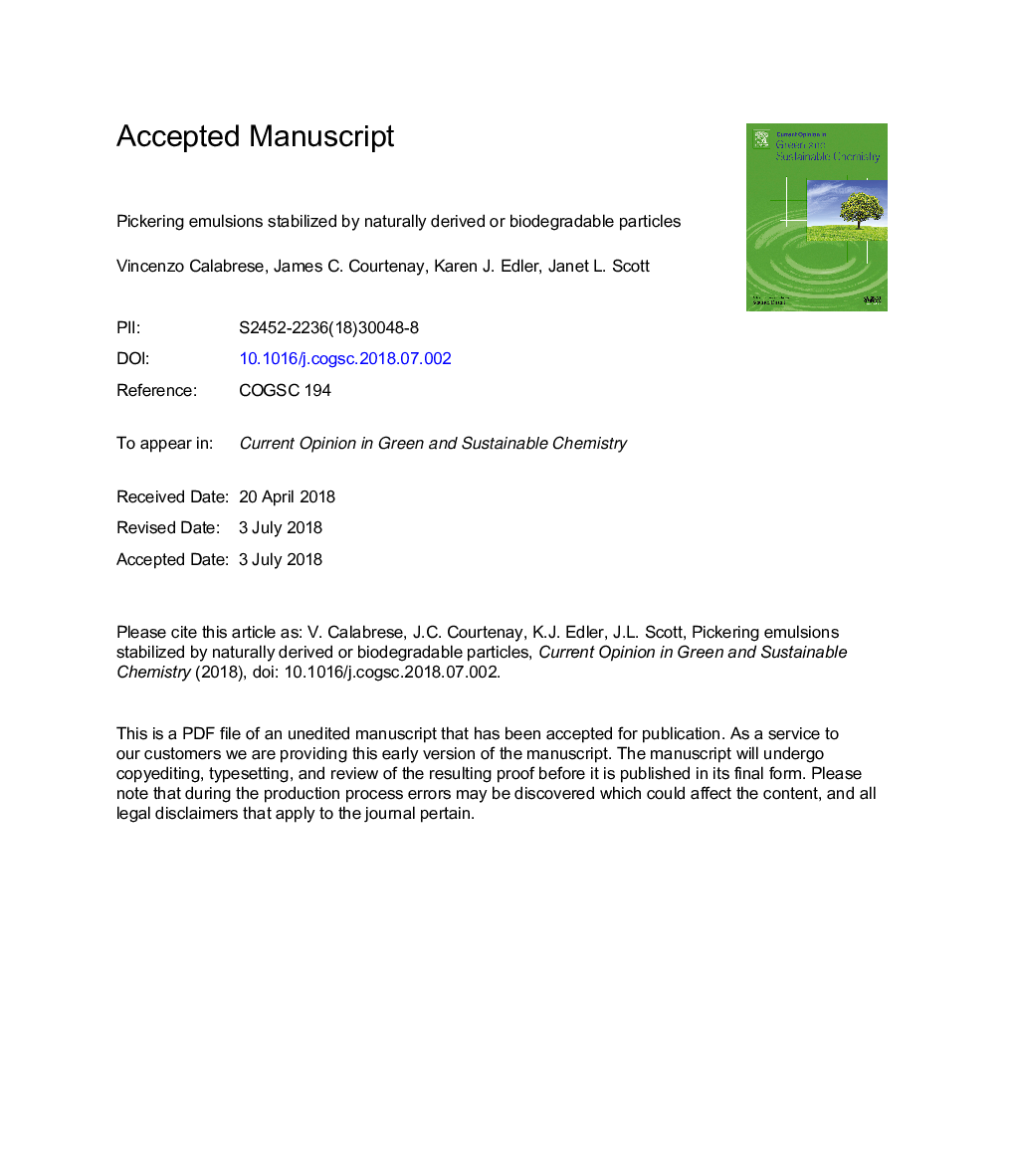| Article ID | Journal | Published Year | Pages | File Type |
|---|---|---|---|---|
| 7695283 | Current Opinion in Green and Sustainable Chemistry | 2018 | 20 Pages |
Abstract
Emulsions are used widely in formulated consumer products, paints and coatings, foods, and pharmaceutical preparations to name just a few examples. Frequently surfactants are employed as emulsifiers, but the use of particles, including nanoparticles, can offer advantages. Naturally derived, or synthetic, particles that are biodegradable can reduce end-of-life environmental impact, while offering advantages such as lack of irritancy in use (e.g., on skin) and, in some cases, the use of particle supported Pickering emulsions may provide more environmentally friendly processes (e.g., biphasic catalysis mitigating use of solvents) or environmental cleanup solutions (e.g., oil spill dispersion). Here we review four classes of (nano)particles that can be employed as Pickering emulsion stabilizers: minerals, polysaccharides, synthetic polymers and proteins.
Related Topics
Physical Sciences and Engineering
Chemical Engineering
Catalysis
Authors
Vincenzo Calabrese, James C. Courtenay, Karen J. Edler, Janet L. Scott,
